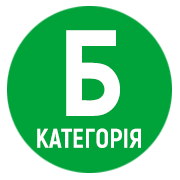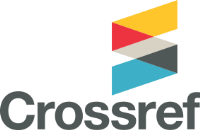ARTISTIC VISUAL THINKING OF SCHOOLCHILDREN AS VISUAL FORM OF MEANING-MAKING IN TIMES OF WAR
Abstract
The article explores the artistic visual thinking of schoolchildren as a specific visual-cognitive form of understanding the experience of loss, anxiety, uncertainty, and hope in war conditions.Despite the increasing focus on children’s traumatic experiences during wartime, artistic visual thinking as a resourceful and diagnostic tool remains insufficiently explored in psychological research. Its relationship with existential phenomena – such as loss, isolation, anxiety, meaning, and hope – requires further theoretical and empirical attention. This is especially relevant when analyzing children’s drawings as a symbolic means of processing both collective and personal trauma.The purpose of this study is to analyze schoolchildren’s visual artworks as expressions of trauma-related meaning-making in wartime; to identify recurrent visual metaphors, symbols, and compositional strategies used to convey emotional experience; and to reveal the psychological potential of visual thinking as a means of trauma integration and internal coherence.The scientific novelty of the research lies in uncovering psychological mechanisms of aesthetic transformation of trauma and in analyzing the role of visual thinking in helping gifted students develop resilience and participate in collective sense-making during war.Conclusions. In wartime, children’s visual thinking becomes an emotionally rich and symbolically complex form of experiencing reality. Artworks serve multiple functions: emotional regulation, symbolic trauma integration, communication, preservation of subjectivity, memory, and hope. Visual creations act as signs of psychological recovery and meaning reconstruction. Through symbolization, externalization, aesthetic distancing, and visual reflection, children demonstrate the ability to process trauma and transform it into images that support individual and collective resilience. Thus, children’s artistic expression serves not only therapeutic but also sociocultural functions, contributing to the rethinking of collective trauma and strengthening social cohesion.
References
2. Горностай П.Г. Психологія колективних травм : монографія. Кропивницький : Імекс-ЛТД, 2023. 336 с.
3. Завгородня О. Арттерапевтична підтримка ментального здоров’я людини в умовах загрозливої невизначеності. Новітні зміни сучасного суспільства. 2024. Вип. 116. С. 68–78.
4. Проєкт «Мамо, я бачу війну». 2022–2023. Архів дитячих малюнків війни. URL: https://mamoyabachuvijnu.com
5. Процик Л. Переживання надзвичайної ситуації як вітальної загрози. Наукові перспективи. 2022. № 12 (30). С. 500–509.
6. Сміт П., Дирегров Е., Юле У. Діти та війна: навчання технікам зцілення. Львів : Інститут психічного здоров’я УКУ, 2014.
7. Яцина О.Ф. Вплив війни на психічне здоров’я: ознаки травматизації психіки дітей та підлітків. Наукові перспективи. 2022. № 7 (25). https://doi.org/10.52058/2708-7530-2022-7(25)- 554-567
8. Children in emergencies and conflicts. In Wikipedia. Retrieved May 6, 2025. URL: https://en.wikipedia.org/wiki/Children_in_emergencies_and_conflicts
9. Clacherty G. Drawings in a “Container”: A Visual Narrative Approach to Research With Refugee Children. Social Inclusion. Vol. 12, Nº 4, 1–14, 2024. https://doi.org/10.17645/si.8629
10. Towards a ‘patient-centred’ operationalisation of the new dynamic concept of health: A mixed methods study / Huber M., van Vliet M., Giezenberg M., Winkens B., Heerkens Y., Dagnelie P. C., Knottnerus J. A. BMJ. 2016. V. 6. P. 35–40.
11. Huss E., Sarid O. Visually Processing Trauma: Art Therapy with Children Exposed to Political Violence. The Arts in Psychotherapy. 2015. Vol. 45. P. 11–17. https://doi.org/10.1016/j.aip.2015.05.007
12. Kalmanowitz D. L., Ho R. T. H. Art Therapy and Mindfulness with Survivors of Political Violence: A Qualitative Study. Psychological Trauma: Theory, Research, Practice, and Policy. 2017. Vol. 9 (Suppl. 1). P. 107–113. https://doi.org/10.1037/tra0000174
13. Kumar I. K., Shen J., Ferguson C., Picard R. W. Connecting through Comics: Design and Evaluation of Cube, an Arts-Based Digital Platform for Trauma-Impacted Youth. CSCW ’25: Proceedings of the 28th ACM Conference On Computer-Supported Cooperative Work And Social Computing. 2025. https://doi.org/10.48550/arXiv.2412.09834
14. Malchiodi C. A. Trauma and Expressive Arts Therapy: Brain, Body, and Imagination in the Healing Process. New York : Guilford Press, 2020.
15. Naidoo R., Shaik S. “I Think Too Much” – Culture, Trauma, and Expressions of Distress. Teaching Anthropology. 2024. Vol. 13(2). P. 87–99. URL: https: //www.teachinganthropology.org/ojs/index.php/teach_anth/article/view/727
16. Art Therapy in Pandemics: Lessons for COVID-19 / Potash J. S., Kalmanowitz D., Fung I., Anand S. A., Miller G. M. Art Therapy. 2020. Vol. 37(2). P. 105–107. https://doi.org/10.1080/07421656.2020.1754047
17. Reuters. Emotional trauma piles up for Ukraine’s children three years after invasion. 2024, February 20. URL: https://www.reuters.com/world/europe/emotional-trauma-piles-up-ukraines- children-three-years-after-invasion-2025-02-20/
18. Vestergaard E. V. Trauma, Cultural Complexes, and Transformation: Folk Narratives and Present Realities. London : Routledge, 2018. https://doi.org/10.4324/9781315294650

This work is licensed under a Creative Commons Attribution 4.0 International License.







